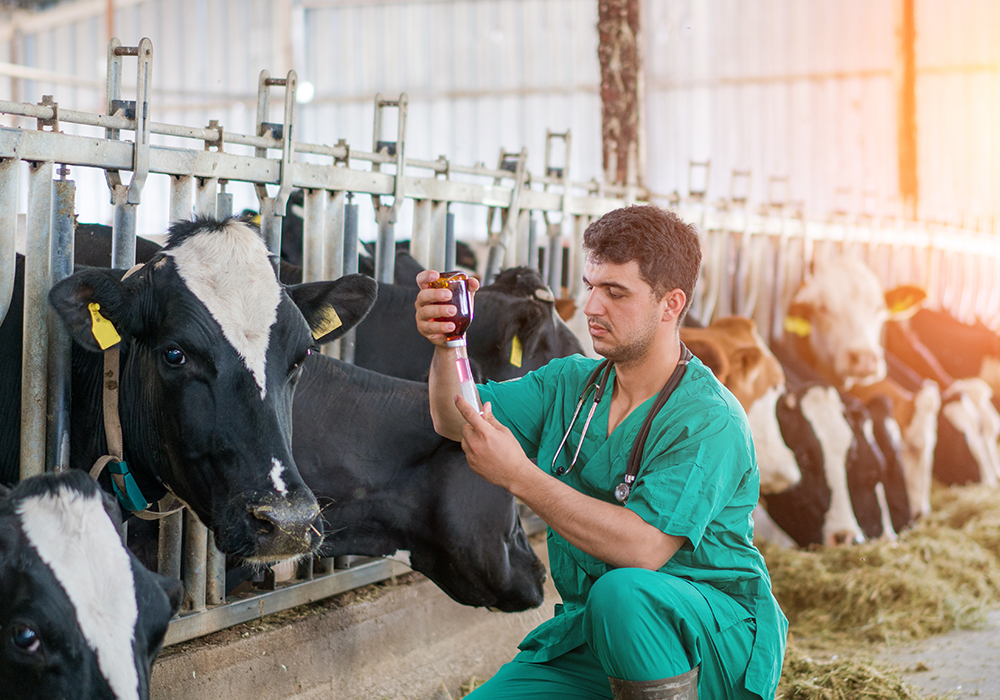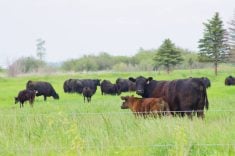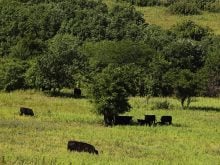Vaccines for cattle can be categorized in several ways.
We can categorize them by the pathogen that they are designed to protect the animal from (bacterial or viral), or we can categorize them by their route of administration (injectable or nasal).
For viral vaccines, we also can split them into modified live or killed vaccines. For example, most of the common viral vaccines that we use in cattle contain infectious bovine rhinotracheitis (IBR) virus as one of their components.
Read Also

Canada told trade crisis solutions in its hands
Canadians and Canadian exporters need to accept that the old rules of trade are over, and open access to the U.S. market may also be over, says the chief financial correspondent for CTV News.
Veterinarians can supply either modified live or killed vaccine options, and we now also have both intranasal and injectable options. Each type of vaccine might have an advantage or disadvantage depending on the particular management issues and risk factors in your herd.
In a killed vaccine, the virus is completely inactivated or is made up of a component of the virus, such as a surface protein, to produce an immune response.
These vaccines are stable and usually come in a single bottle that doesn’t require mixing but often require a larger volume per dose. They are safe to give to pregnant animals but often require booster vaccinations to induce immunity the first time they are administered.
Modified live vaccines are made by attenuating or weakening a virus so that it can’t cause disease. These vaccines require more careful storage because the virus is live and often require mixing prior to use.
Because the virus is still alive, the vaccine has to be kept cool and away from UV light exposure.
Producers must also use up the vaccine within one hour of mixing, and any vaccine that is left over must be thrown away.
However, these live virus vaccines often can be in a smaller volume per dose and usually provide a longer-lived immune response. Booster vaccinations may not be required when they are used for the first time, but they cannot be used in naïve pregnant cattle.
Vaccine interference has been described in a number of ways.
The most common type of vaccine interference occurs when the vaccine is administered to very young calves.
Calves acquire their immunity passively from their dam through the colostrum they consume in the first six hours of life. These maternal antibodies circulate in their system for the first few months of life and can potentially neutralize the modified live vaccine viruses and interfere with vaccine efficacy if calves are vaccinated at a young age.
However, other parts of the immune system will still respond to the vaccines, even if maternal antibodies are present.
The other form of vaccine interference has been observed when multiple vaccines are given at the same time.
This type of vaccine interference has been examined in scientific studies and seems to have a very minor effect on antibody responses and probably doesn’t significantly impact disease protection.
However, now that intranasal vaccination has been more widely adopted with calves, researchers have started to wonder if vaccine interference could be occurring in the upper respiratory tract when we use multiple intranasal vaccines.
A recent study in the American Journal of Veterinary Research was published by Dr. Philip Griebel’s lab from the Vaccine and Infectious Disease Organization in Saskatoon along with other collaborators.
The study used 36 Holstein calves that were five to 12 days of age.
They were given one of four vaccine treatments:
• A placebo (no vaccine).
• An intranasal IBR vaccine.
• An intranasal coronavirus vaccine.
• Both vaccines together (the IBR vaccine and coronavirus vaccine).
The calves received a booster of the vaccine four weeks after the initial vaccination.
As would be expected, the calves already had antibodies to both IBR and coronavirus when they started the study because of the maternal antibodies they had received via colostrum.
The researchers then introduced an IBR viral challenge three weeks after the booster vaccination, and the calves were euthanized 10 days later to evaluate lung pathology.
In addition, the researchers evaluated a variety of antibody responses in the serum and at the nasal level, as well as body temperature and virus shedding.
The most important finding was that giving the two vaccines in combination did not reduce the antibody responses to the vaccines when compared to giving them separately.
The researchers also demonstrated that the calves that received the intranasal IBR vaccine had a reduction in lung lesions, virus shedding and clinical disease after the challenge with IBR virus and that this protection was similar in the calves that received the two different vaccines or the single IBR vaccine.
It would appear from this study that vaccine interference is not a major issue with intranasal vaccines and that in this age group of calves, vaccines for IBR virus and coronavirus can be given together without having any impact on protection or immune responses.
This type of research can inform the vaccine protocol that producers use in their herds, but the protocols can vary widely between ranch operations depending on a variety of risk factors and management issues.
As a result, producers should always consult their veterinarian before making any major changes.
John Campbell is a professor in the department of Large Animal Clinical Sciences at the University of Saskatchewan’s Western College of Veterinary Medicine.















